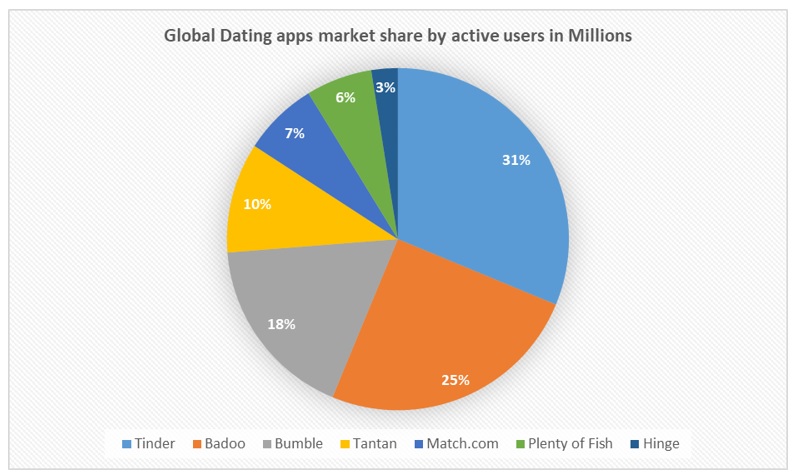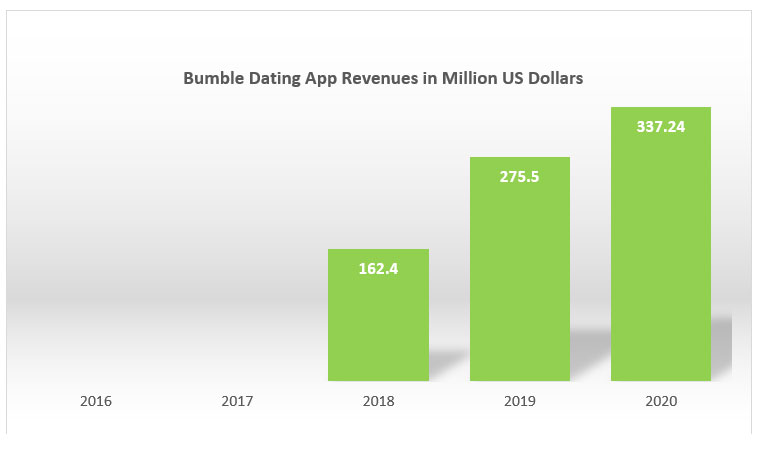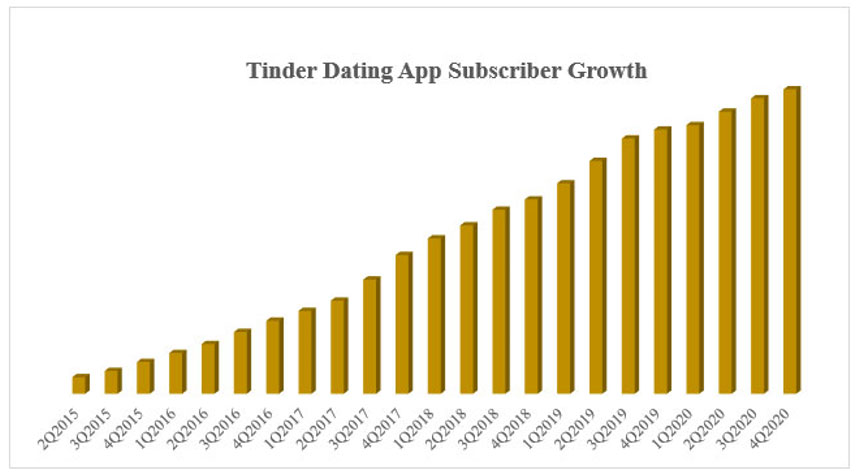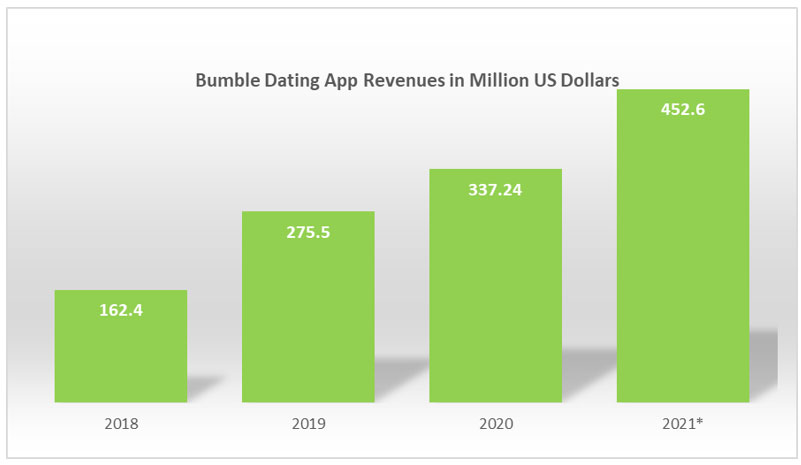Biohybrid robotic hand may help unravel complex sensation of touch
Artificial tactile system study: Robots’ sense of touch could be as fast as humans
ABB Robotics launches global startup challenge to accelerate innovation in robotics and AI
How Much Does It Cost To Build Dating App In 2024?
How Much Does It Cost To Build Dating App?
Mobile Applications have alerted the way people interact with each other. Communication apps or video calling mobile apps have occupied more space in this mobile world. Along with these apps, people switching to dating apps is on the rise.
Downloads of dating apps for Android and iOS from Google Play Store and Apple App Store have been increasing every year. Mobile dating apps are giving flexibility to people to find and connect, chat, and meet others with their preferences.
Tinder, Bumble, and Badoo are the best dating apps that reported higher downloads. These intelligent mobile platforms are assisting people to find perfect soulmates and build relations if they are interested.
Ever like before, popular dating apps downloads and demand have reached peak levels during lockdowns forced due to the COVID-19 pandemic.
People are increasingly downloading Android dating apps and iOS dating apps to erase their boredom during lockdowns. Mobile dating applications allow people to find potential matches in seconds with gentle swipes.
Besides, since the dating apps are featured with video calling and multi-level user authentication, people are happily installing and spending blissful time to find their matches. These features are core pillars for the mobile dating app’s success.
This trend of dating app usage is ensuring plentiful business growth opportunities for enterprises. Most companies have already planned their budget for dating app development.
If you are looking ahead to Tinder-like dating app development, this article will help you out. Herein, we have given a complete guide on dating app features, functionalities, and app development costs details.
Here are three popular dating apps (for Android and iOS) usage statistics.
The Best Mobile Dating Apps That Occupied The Highest Share In the Category
Tinder, Badoo, and Bumble have occupied the majority of dating apps market share globally. Have a look at the below image to better understand the dating apps market share in this digital sphere.

Let’s dive deeper into the benefits, features, and convenience of the top three dating apps, including Tinder, Badoo, and Bumble.
-
Tinder- Number 1 Dating App For Android and iPhone
Tinder is one of the best dating apps which is available for both Android and iOS mobile users. It is creating a buzz in the online dating apps development industry.
In this digital age, in particular, COVID season, going out and having fun with friends and finding new people around will be like a challenge.
Especially, people who stay alone and need a company to share their thoughts and views are in the front line to download and use dating apps. The tinder-like famous dating app is the best buddy for such people. It is allowing people to find connections who meet their preferences in a pretty simple way.
Tinder is a modern app that runs seamlessly on both Android and iPhone mobile devices. Its simple and easy-to-use swipe and scroll feature allows people to search and like or dislike connections. This highly-secured dating app lets users swipe right to connect and chat with someone in mutual interest or swipe left to dislike contacts.
Further, its in-app video calling feature improves user personalization and enables users to call and build relations stronger. But, this feature is only accessible by Tinder users in the US, UK, Brazil, Australia, Spain, Italy, France, Vietnam, Indonesia, Korea, Taiwan, Thailand, Peru, and Chile.
Tinder has occupied the hearts of users. Such a huge success encourage it to launch premium subscription models. It has developed premium versions, Tinder Plus and Tinder Gold in 2015 and 2017.
Here are a few significant statistics of the Tinder mobile app:
- Tinder has over 100 million downloads as of Q22021
- It has over 75 million active users per month
- Nearly 6.2 million people are subscribing to this popular dating app to access premium features
- According to Statista, Tinder reported USD 1.4 billion in 2020 increased by 18% over 2019 (USD1.15 billion). The figure below depicts the Tinder app revenues from 2015-2020.

Here is the subscriber’s growth of Tinder-like dating apps for the past five years.

Talk to our app developers and Know-How much does it cost to develop a dating app like Tinder?
-
Bumble- Best Alternative to Tinder
Bumble is one of the best dating applications in the world. It has nearly active users. It has nearly 42 million monthly active users.
It is available for android and iOS. Bumble lets users start finding friends, building genuine relationships, and making huge networks.
Bumble is designed with a unique concept called- Women’s message first. It means if the opposite gender dint get any text within 24 hours, then the app automatically unmatched such connection.
Bumble’s gentle swipe and chat features enable the users to find perfect matches in minutes. The app also allows the users to connect with Spotify and Instagram accounts and share their interests with connections. This feature will help people understand better each other.
Further, bumble is also featured a video calling facility. This will allow users to have a safe conversation face-to-face digitally.
Here are a few significant statistics of the famous Bumble mobile dating app:
- Bumble has a total of 42 million active users
- It has 1.35 million premium subscribers
- Bumble has a 19% market share in US dating apps.
- The Bumble dating app has reported USD 337.24 million in revenues in 2020. Have a look at the below figure reflecting the growth of the Bumble app
 Are you looking to develop a Bumble-like dating application for Android or iOS?
Are you looking to develop a Bumble-like dating application for Android or iOS?
-
Badoo- Top Mobile Dating App In USA
Badoo has over 370 million global users spanned across 190 countries. It is the world’s second-largest dating app. Users can create connections, chat, date & meet. Video chat, verified profiles, and location-based navigators to track nearby people are the best features of this popular dating app.
Both free and paid versions of Badoo are available on Google Play for Android and the Apple App Store for iOS/iPhone users to download.
Badoo dating app growth statistics
- Badoo is reporting 3.9 million monthly downloads
- Reported higher downloads and revenue from North and Latin America
Get in Touch to Know How much does it cost to develop an app like Badoo!
Would you like to invest in dating apps development?
USM Business Systems is the best mobile app development partner for you. We are a leading dating apps development company in the USA. Our mobile app development team expert-level knowledge of mobile technologies can build mobile apps on Android and iOS platforms.
Now, let’s look at significant features and functionalities that make your dating apps more unique and customer-friendly.
Must-Have Features Of Trending Mobile Dating Apps
Features and functionalities will decide the success of mobile apps. Be it a native app or hybrid app development, user-friendly features and simple UI design give it a big hit in the app stores.
Here are the must-have features of dating applications to offer an outstanding experience to your audience.
Required features for user panel:
- Simple registration and sign-in page- It allows users to register and create a profile to access the app features and functionalities.
- Flexibility to access the app through social media accounts
- The multi authentication process for ensuring high security
- Create or edit profile feature to add or delete or edit personal information, partner preferences, photos, etc.
- Push notifications- For sending alerts and updates on contacts
- In-app ads for generating additional revenues from the application
- Geo-location for tracking user location
- In-app chat feature for encrypted communication
- Send request feature to facilitate users to send the request for their interests to chat or date.
- Private albums- To upload photos
- Search and custom filters to find potential matches instantly
- Develop both Free and premium subscriptions
- Integrate the app with AR/VR capabilities to let users organize virtual dates
- Empower dating apps with Artificial Intelligence capabilities to intelligently respond to the user queries instantly
- Virtual gifts allow the users to send virtual gifts to their matches and strengthen their bond.
Required features for Admin panel
- User Profile management
- Multilingual support
- User location tracking and management
- Features and functionality management
- Screen management for monitoring the users switch to in-app pages
- Create and manage reports and analytics
- Tracking fake profiles and removing them for other conveniences
- Push notifications management
- Revenue tracking
Get a free app quote for the Android dating app.
Technology stack for Android/iOS Mobile dating apps development
Programming Languages
- Swift
- Objective C
- Java
- Ruby/Cucumber
- Rubymotion
Backend/API stack
- Python
- Bash scripting
- Mapbox
- JavaScript
- Elasticsearch
- MongoDB
- Redis
- AWS
- GoDaddy SSL
Dating App Monetization Strategies For Businesses
- In-app shopping ads
- In-app subscriptions for extra swipes, preferences, and emotions
- Premium subscription charges
- Synchronization of e-commerce platforms to create income
How Much Does It Cost To Develop A Dating App?
The cost of dating app development depends on its complexity level, features, functionalities, and the mobile app development company that you hire.
With 20+ years of experience in providing mobile and web application development services, USM estimates that the development cost of dating applications with basic features for a single platform (either android OS or iPhone OS) would be around $50,000-$72,000.
Talk to our expert Android and iOS mobile app developers to know the development cost of on-demand dating apps.
[contact-form-7]